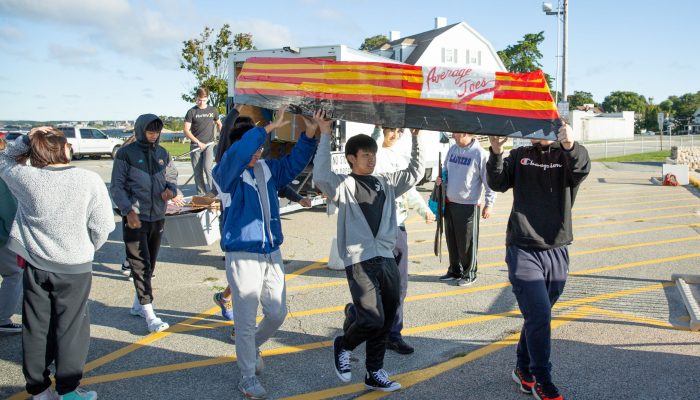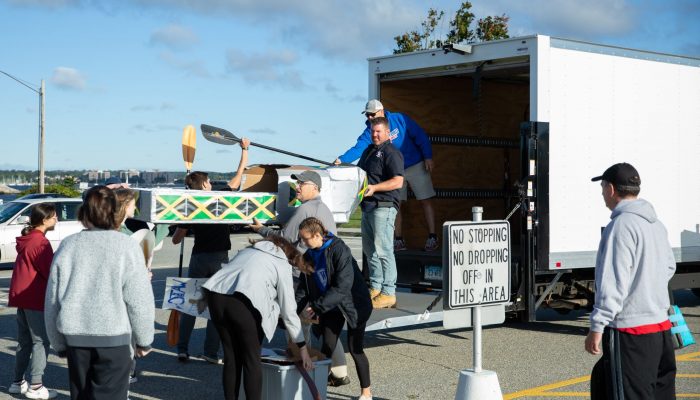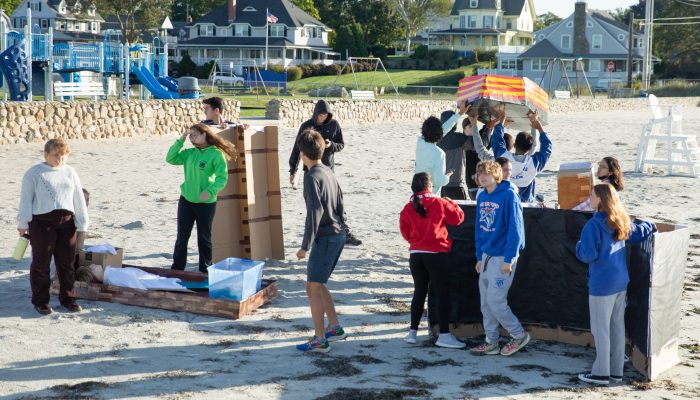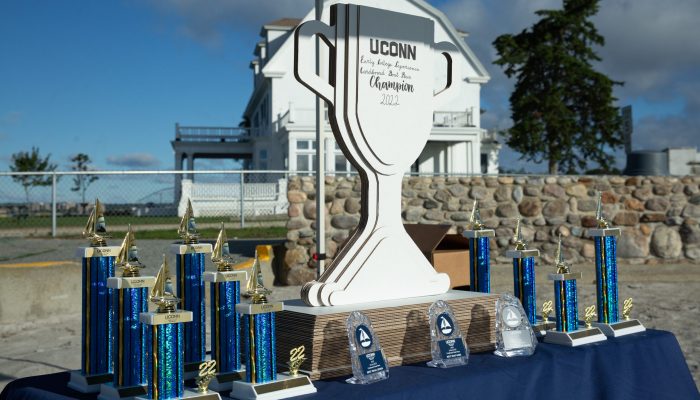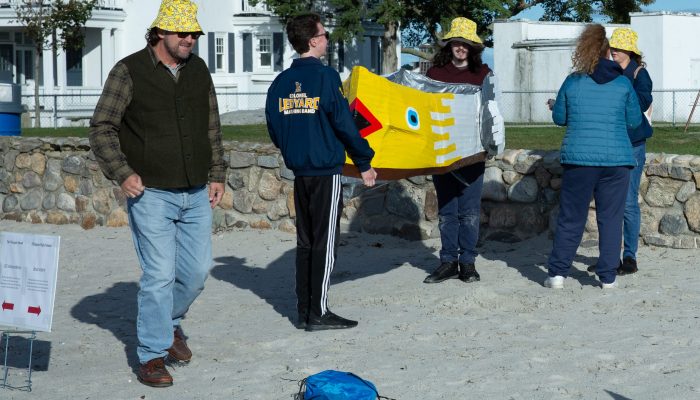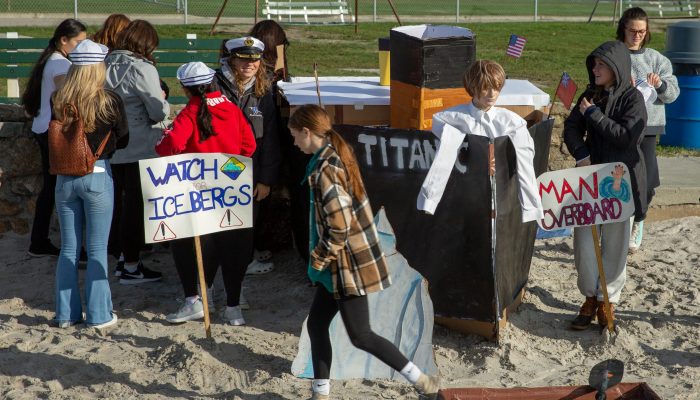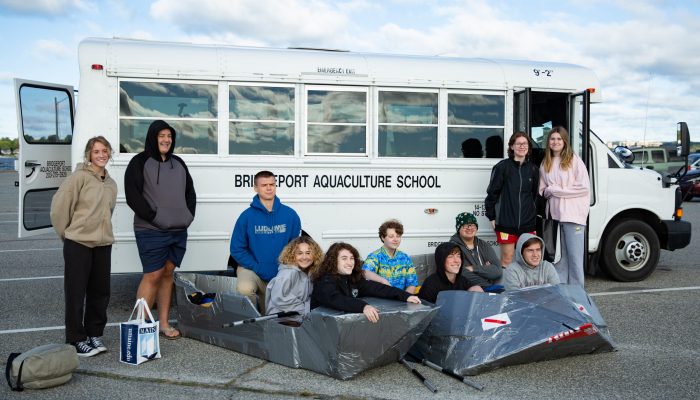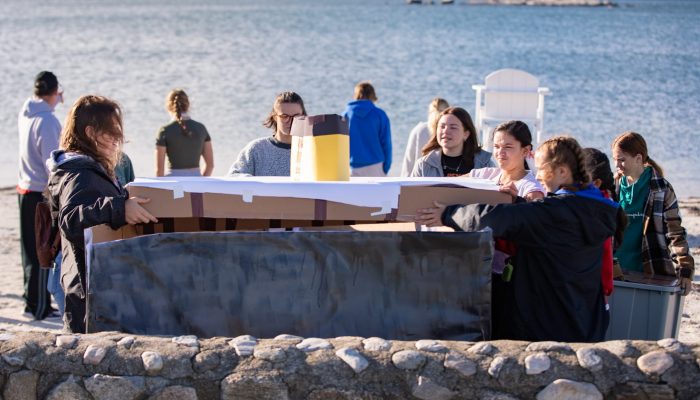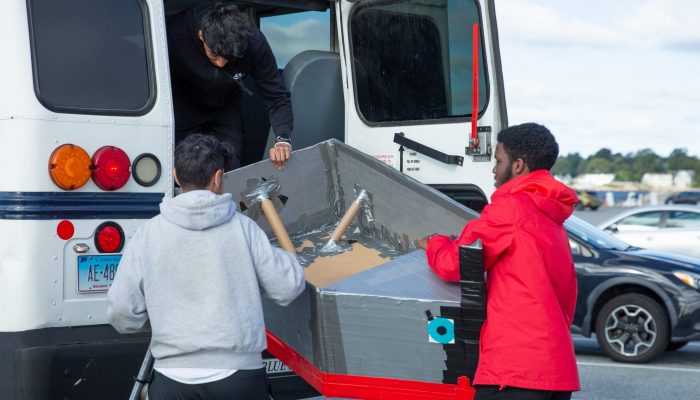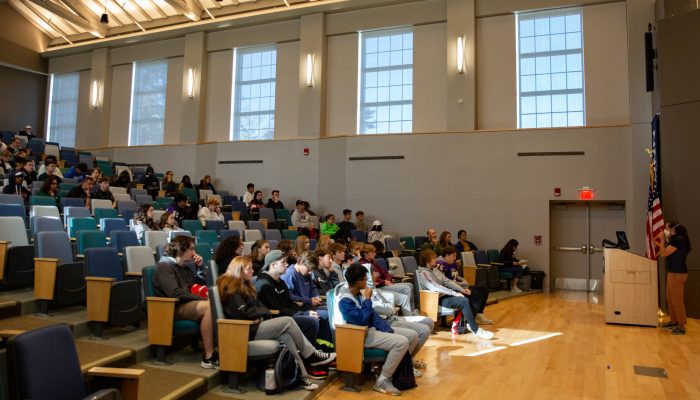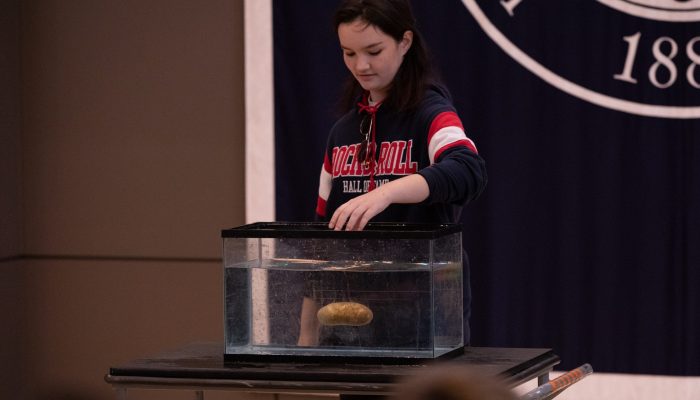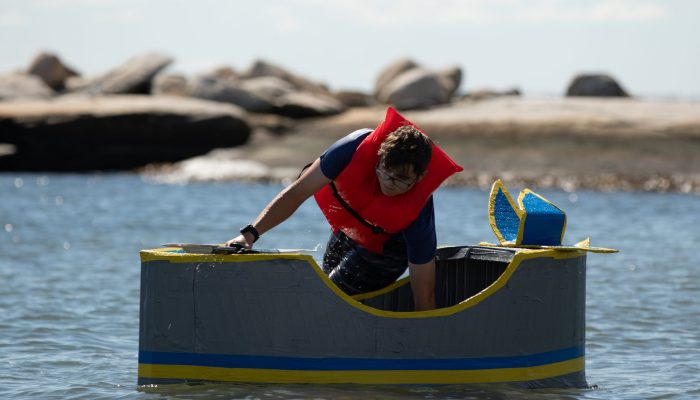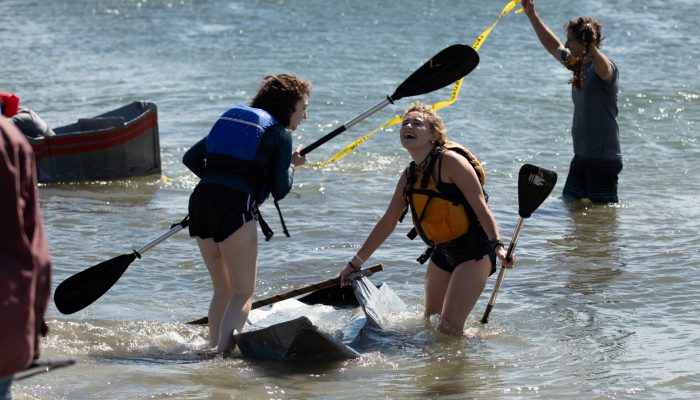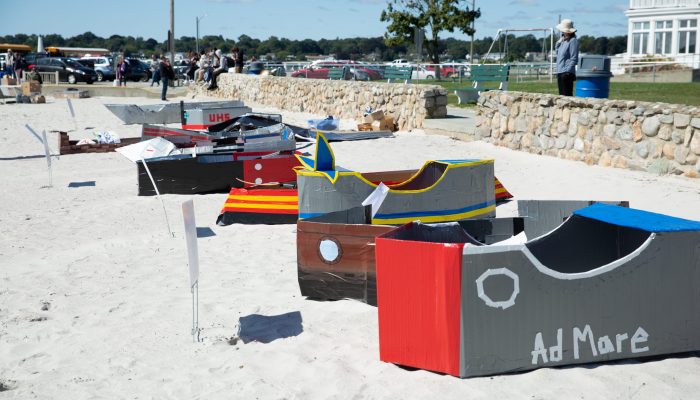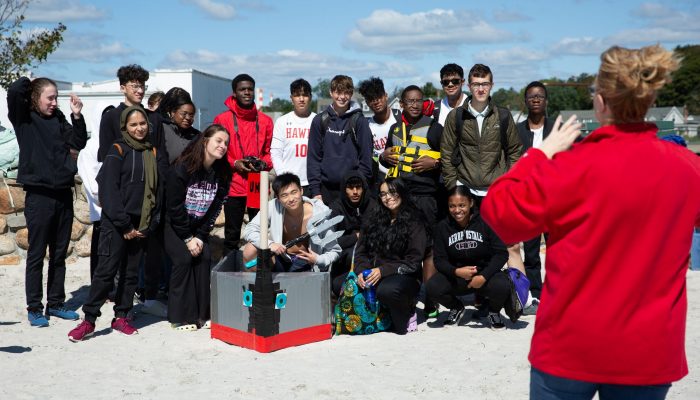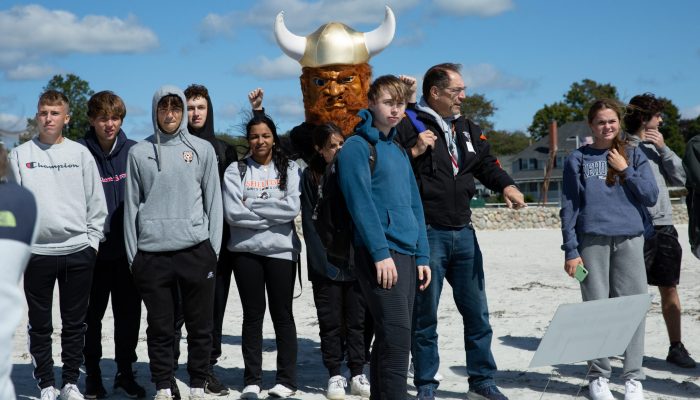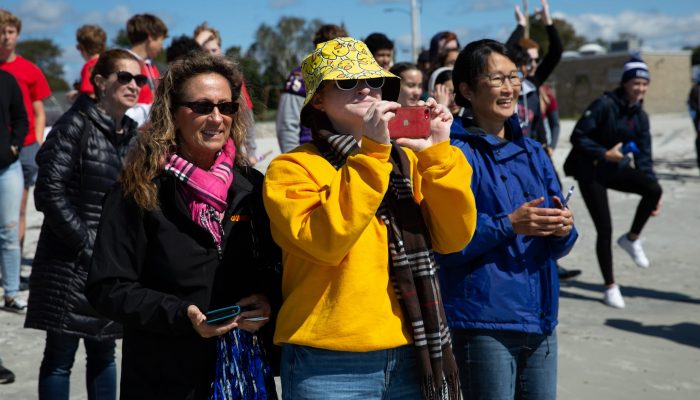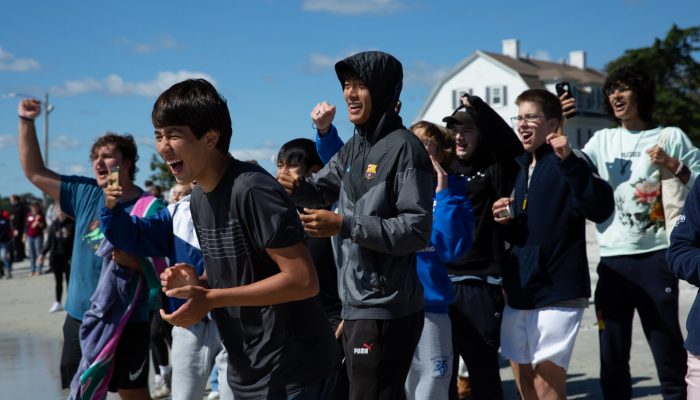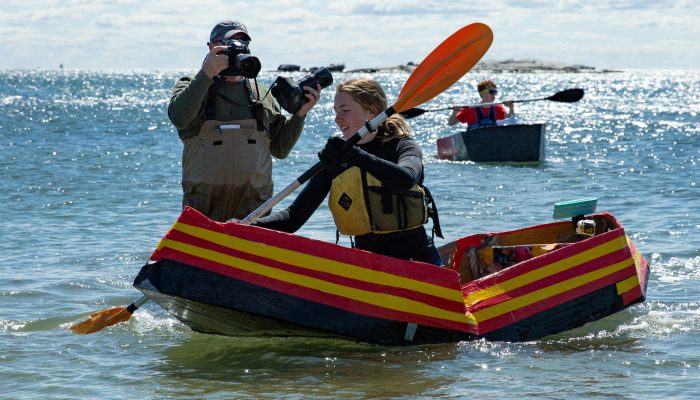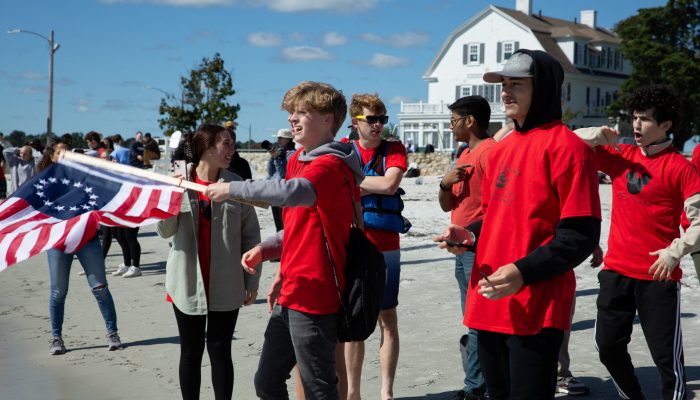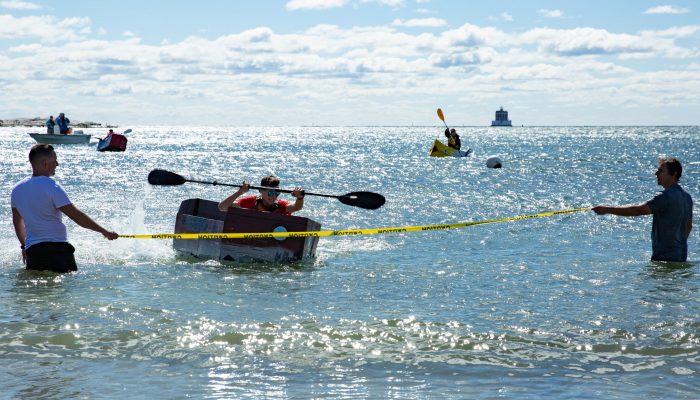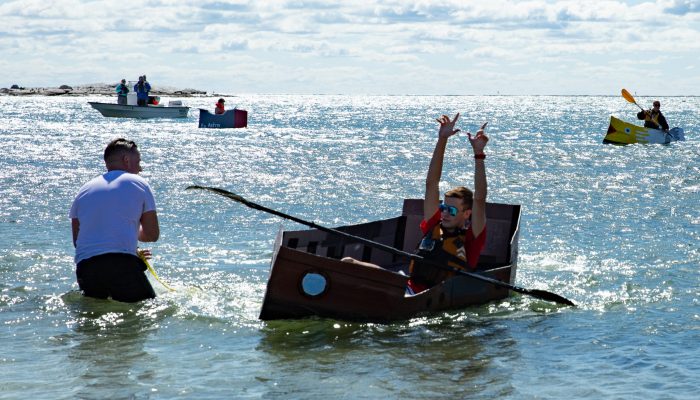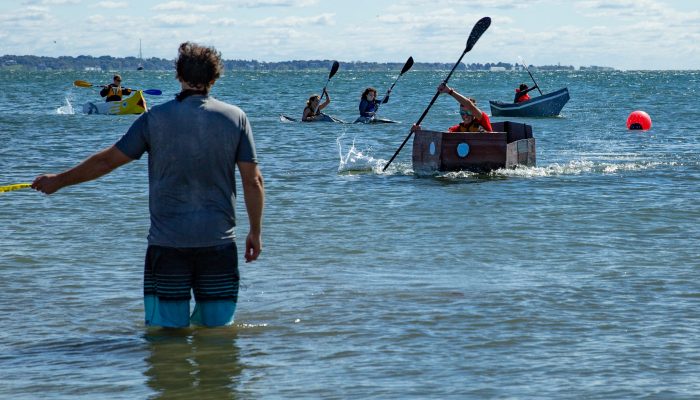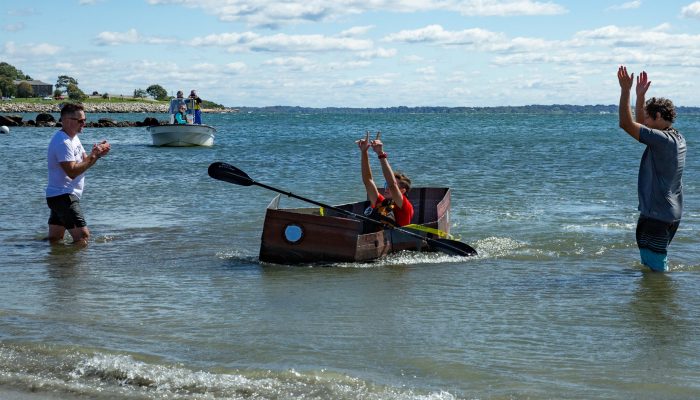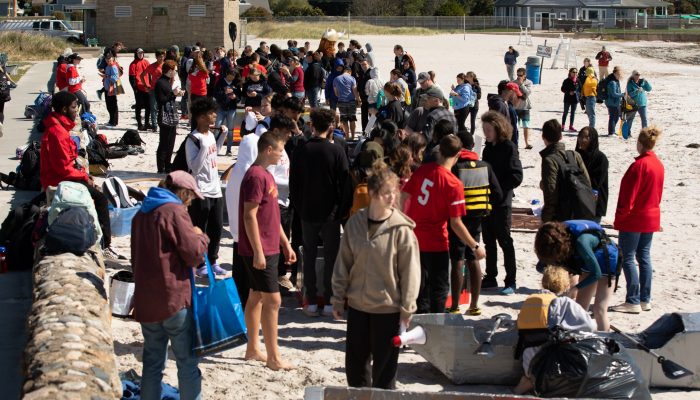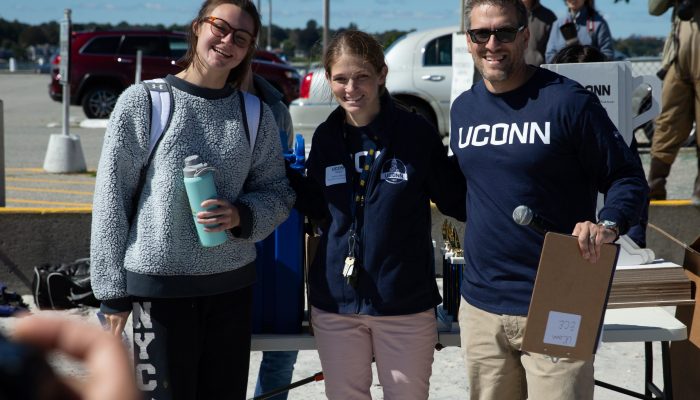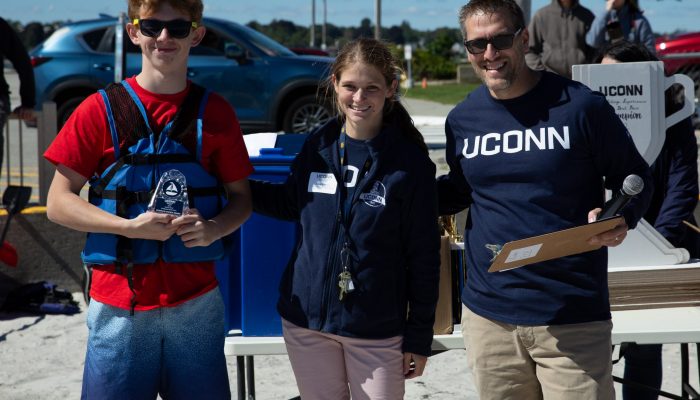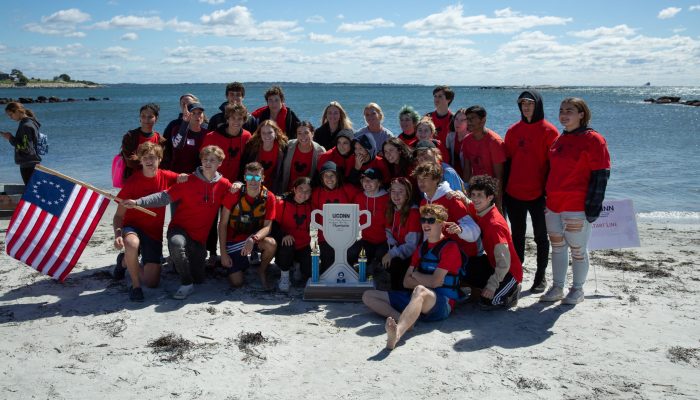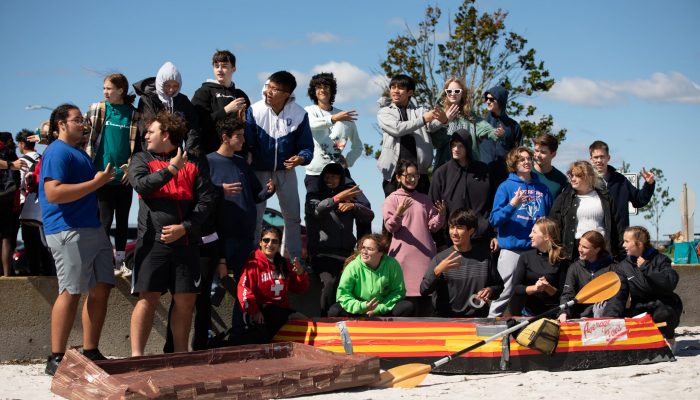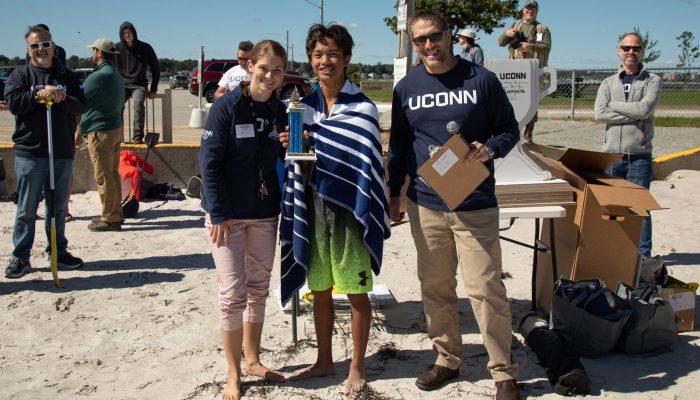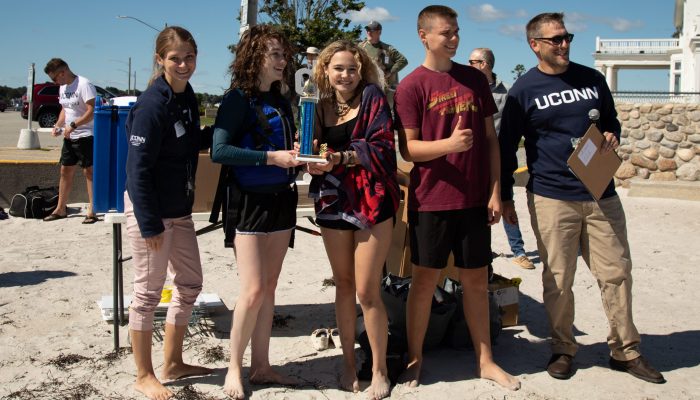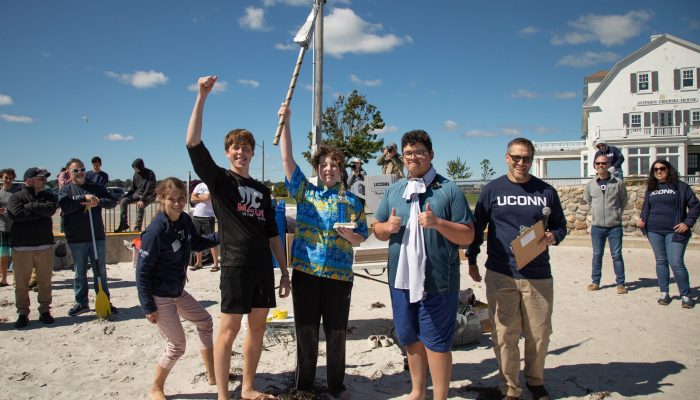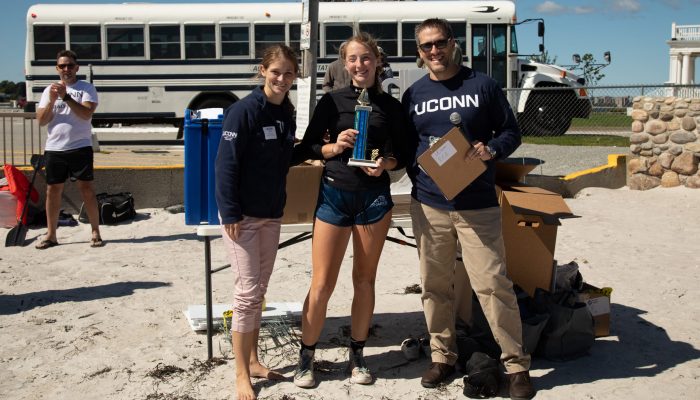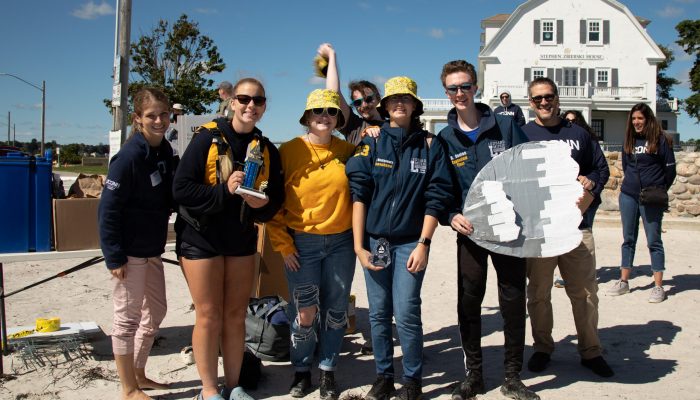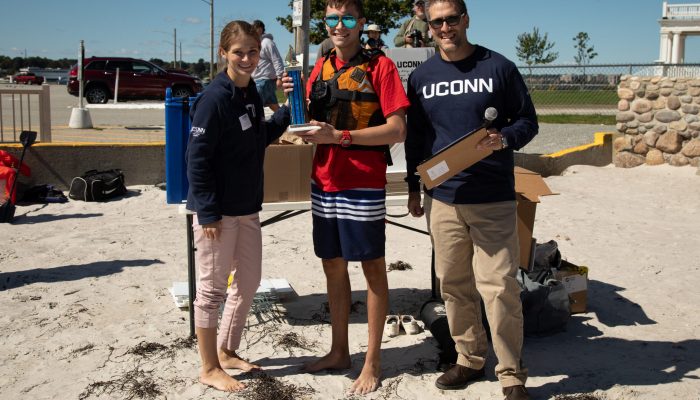By Jessica Dunn | Photos by Gordon Daigle and Mike Illuzi
UConn ECE Faculty Coordinator of the Year, Dr. Chunsheng Yang, brought back the UConn ECE Chinese Talent show to the benefit of 175 students this past March. With 100 UConn ECE Students, and about 75 UConn undergraduates, this event provided a space for students to work together to demonstrate their Chinese skills through various abilities and learn to embrace cultural diversity. As Dr. Yang explained in an interview for the UConn Daily Campus, “the Chinese talent show provides an avenue for both high school Chinese learners and UConn undergrad Chinese learners to showcase their Chinese language skills and have fun while socializing with peers both from other CT high schools and UConn undergraduate students.”
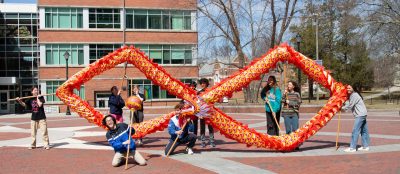
Participants from Connecticut high schools were students enrolled in UConn Chinese 1114 through UConn ECE and represented Amity Regional High School, Simsbury High School, Granby Memorial High School, Hall High School, Miss Porter’s School, and Norwich Free Academy. Along with attendance from high schools across the state, there was also a wide variety of talents showcased at the event. From a Kung Fu performance from Amity Regional High School and a Gourd Flute performance from Miss Porter’s School to an authentic Dragon Dance from Hall High School, the talent was extraordinary, and it was evident the students worked very hard throughout the year to improve their Chinese language skills and gain the confidence to perform at UConn in front of their peers.
We commend all students for their willingness to participate and look forward to offering this event to future UConn ECE students.

UConn ECE项目负责人杨春生是 2023 年度 ECE Faculty Coordinator Award获得者,他于今年3月组织了UConn ECE中文才艺秀。此次活动汇聚了100 多名UConn ECE 学生和75名 UConn 本科生,为学生提供了一个共同展示中文技能、欣赏文化多样性的平台。正如杨博士在接受UConn Daily Campus采访时所说:“中文才艺秀为高中中文学习者和 UConn 中文学习者提供了展示中文技能、与其他高中和 UConn本科生社交的机会。”
才艺秀的高中参与者都是UConn ECE中文课程的学生,包括Amity Regional High School、Simsbury High School、Granby Memorial High School、Hall High School、Miss Porter’s School 和 Norwich Free Acad¬emy。来自不同高中的同学展示了各种各样的才艺,从 Amity Regional High School 的功夫表演,到 Miss Porter’s School 的葫芦丝表演,到 Hall High School 的正宗舞龙表演,同学们个个才华横溢,在展示中文语言能力的同时,也表现出精湛的表演才能。
我们为所有参与的同学喝彩,并期待将类似活动扩大到UConn ECE的其他项目中去。
Translated by UConn ECE Chinese Faculty Coordinator, Dr. Chunsheng Yang
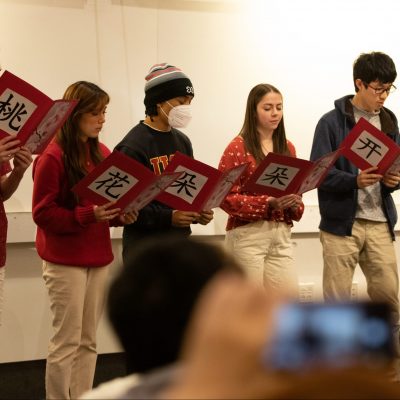

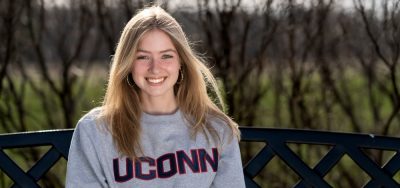
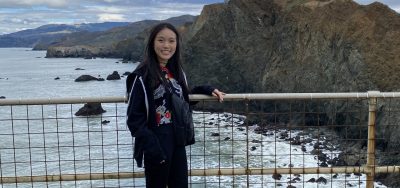

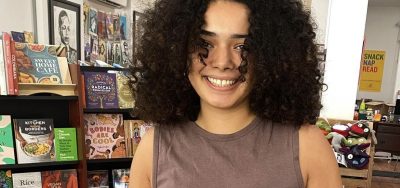

 First Place/cover
First Place/cover Second Place
Second Place Third Place
Third Place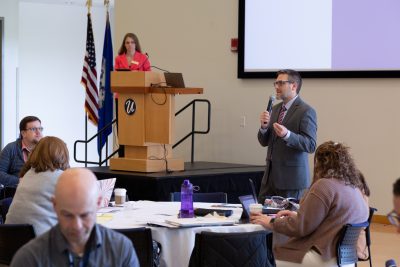
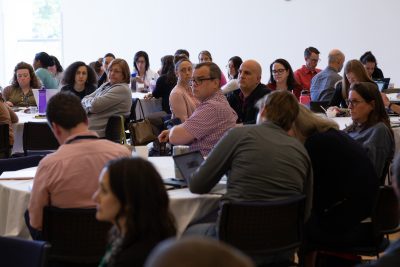

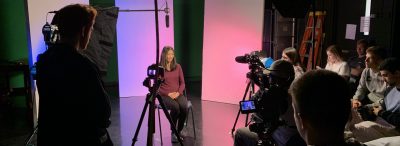 tall interactive game wall in the Boston Children’s Hospital or historic VR tours of King Charles the IV’s crowning ceremony, our students make works of art by thinking collaboratively. Collaboration and critique are valuable skills in new media, corporate, and academic environments. Our program accommodates most professional and open-source software, and we work with teachers who need initial support converting courses. Students in our program intern and work at companies like Adobe, Disney, Epic Games, ESPN, and Pixar. For teachers looking to apply, please check the requirements of the portfolio on the
tall interactive game wall in the Boston Children’s Hospital or historic VR tours of King Charles the IV’s crowning ceremony, our students make works of art by thinking collaboratively. Collaboration and critique are valuable skills in new media, corporate, and academic environments. Our program accommodates most professional and open-source software, and we work with teachers who need initial support converting courses. Students in our program intern and work at companies like Adobe, Disney, Epic Games, ESPN, and Pixar. For teachers looking to apply, please check the requirements of the portfolio on the  UConn ECE
UConn ECE  After being introduced to molecular photoswitches by Dr. Michael Kienzler, from UConn’s Chemistry Department and the ECE
After being introduced to molecular photoswitches by Dr. Michael Kienzler, from UConn’s Chemistry Department and the ECE  UConn ECE
UConn ECE 
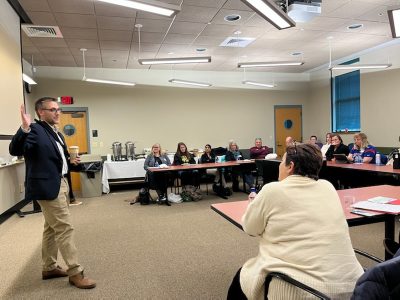
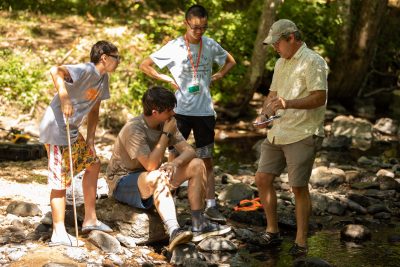
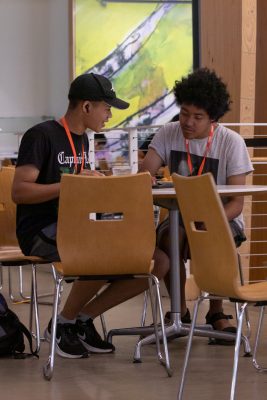

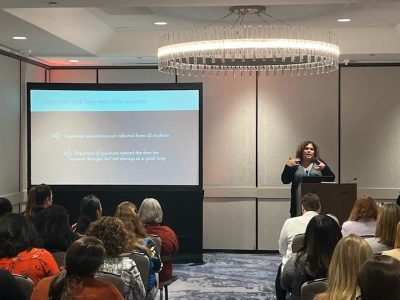 sessions, and workshops, UConn ECE presented a session in the research strand, accepted their re-accreditation plaque, and paid tribute to Prince by visiting the First Avenue Night Club.
sessions, and workshops, UConn ECE presented a session in the research strand, accepted their re-accreditation plaque, and paid tribute to Prince by visiting the First Avenue Night Club. discussed how she improved the UConn ECE Alumni Survey and aligned it with other surveys and data collection points, with the ultimate goal of having a cohesive data set for continual program improvement. Todd and Rutkauskas attended the accreditation and re-accreditation luncheon where they accepted the UConn ECE NACEP re-accreditation plaque, indicating that the UConn ECE program meets NACEP standards and will hold this accreditation for the next seven years. UConn ECE is the only program in New England to hold NACEP accreditation
discussed how she improved the UConn ECE Alumni Survey and aligned it with other surveys and data collection points, with the ultimate goal of having a cohesive data set for continual program improvement. Todd and Rutkauskas attended the accreditation and re-accreditation luncheon where they accepted the UConn ECE NACEP re-accreditation plaque, indicating that the UConn ECE program meets NACEP standards and will hold this accreditation for the next seven years. UConn ECE is the only program in New England to hold NACEP accreditation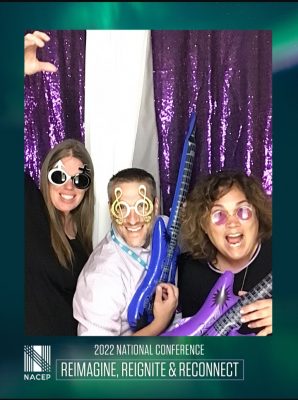 was “how hard people are working to maximize the benefits and experience dual/concurrent enrollment students are having and how widespread these programs are”. Rutkauskas is excited to start using what she learned about
was “how hard people are working to maximize the benefits and experience dual/concurrent enrollment students are having and how widespread these programs are”. Rutkauskas is excited to start using what she learned about 